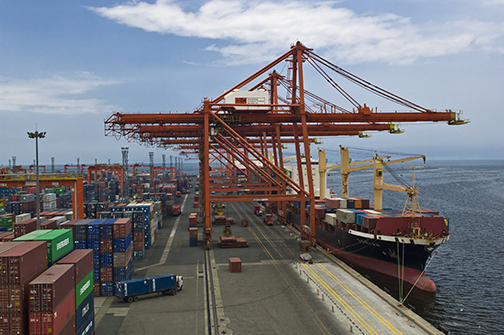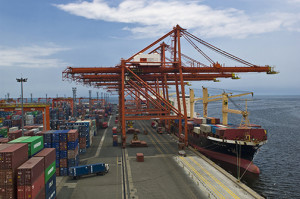

International shipping lines operating in the Philippines reacted to allegations at last week’s Senate hearing on port congestion that they were taking advantage of the container logjam to impose all kinds of charges, saying most have been in place even prior to the congestion.
“There was an hour of a lot of negativity against shipping lines (at last week’s Senate hearing); unfortunately, we were not invited and therefore we were unable to air our side,” Association of International Shipping Lines (AISL) president Patrick Ronas told PortCalls in an interview.
Ronas said shipping line charges in question have been levied even before containers piled up at Manila ports, except for the port congestion surcharge (PCS) and emergency recovery charge, all of which are necessary for prompt container repositioning.
Standard shipping line charges, according to Ronas, include terminal handling fee, documentation fee, container imbalance charge (CIC), container deposit and demurrage.
The CIC is imposed at ports where there is an imbalance in containers, such as the Philippines, where only one in four import boxes is loaded out for export and the three others become empty containers.
The PCS is imposed by shipping lines for the recovery of additional expenses incurred while vessels wait to berth which, at the height of the congestion, stretched up to 30 days. Liners usually rack up US$8,000 to $9,000 per day or more depending on the size of the ship while waiting at anchorage, Ronas said.
He also pointed out these charges are not exclusively imposed in the Philippines but at other foreign ports as well and they are merely partial recovery of additional expenses that the lines have incurred.
Since charges are commercial decisions, Ronas advised shippers to talk to their carriers individually. The AISL cannot decide as a group due to stringent European Union Competition law and US anti-trust laws that prohibit shipping lines from agreeing to fix a charge at a certain rate or even talking about commercial issues. The penalty for carriers found colluding on rates is 10% of the company’s annual gross revenue, Ronas said.
He noted some importers have been given more detention-free time precisely because they talked to their carrier.
Added administrative cost
The AISL chief stressed that carriers “are not in the business of charging penalties or demurrage and detention. This is, in fact, added administrative cost on our part.”
Ronas explained that such penalties are imposed to make sure shipping lines get their containers “in time for the next use of the exporter or the next country” and that they must be “repositioned out as soon as possible out of the port.”
He explained that containers need to go through the cycle properly for a shipping line to be profitable. Otherwise, liners end up leasing boxes and have to make time- or period-related payments.
He said empty boxes sometimes take a long time to return because some truckers decide to wait for days for a space to become available in a container yard, instead of going to Bulacan or Cavite, where space is available and, where despite the distance from Metro Manila, delivery often takes only a day.
Another previous constraint in moving empty boxes, according to Ronas, was the priority given by terminal operators to double transactions — returning an empty then bringing out a laden.
Ronas noted double transactions is an ideal operation but that this is “very hard to do” because the pullout of the laden box is controlled by the importer or broker, while sending empties is controlled by the shipping line and needs the use of a truck.
Problem of empties
The AISL chief said the pileup of empty containers is also partly a result of an improving economy where “we tend to import a little bit more than what we used to before.”
He pointed out that shipping lines do not like empties “sitting around”, describing the situation as “very stressful for everyone and (which) has put tremendous pressure on the operations of empty returns.”
He admitted, “Some lines are handling it very well, but maybe a few lines are having some difficulties.”
“Moving forward we have had some discussions with terminals about moving our empties out,” Ronas said.
The problem of empty containers is expected to ease when Manila International Container Terminal opens its Berth 7 by end of October.
More container yards will also be put up in the next few months, Ronas said, providing additional space equivalent to 5,000 to 6,000 twenty-foot-equivalent units to the current capacity of off-dock depots of around 30,000 TEUs.
Ronas said some liners have also deployed dedicated sweeper vessels just to ship out empty containers, while others are more actively pulling out empty boxes during their regular calls. – Roumina Pablo




